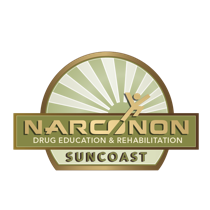Navigating Relapse: How to Turn Setbacks into Comebacks

Struggling with addiction can be incredibly burdensome, and for some, this battle can last for many years. The bright side is that addiction is far from impossible to overcome, especially through the right treatment program. Unfortunately, recovery does not always stick for everyone the first time, and there may be a relapse.
While this can feel like a complete failure, individuals can use this to strengthen their next jump into recovery. Let’s take a closer look at how to turn relapse and setbacks into a stronger recovery.
The Stages of Relapse
Before going any further, let’s look at the definition of relapse. Simply put, relapse means returning to using substances after a period of abstinence. However, relapse doesn’t typically happen from an individual just spontaneously deciding to use again. Rather, they commonly go through certain stages before the actual relapse occurs.
Terrence Gorski, a relapse prevention expert, delineated 11 phases that people go through while relapsing. While these 11 detailed phases are beneficial for treatment providers, experts have simplified these into three broader and easier-to-understand stages. The three stages of relapse are:
- Emotional Relapse: The individual isn’t thinking about using, but their current emotions and behaviors could be heading that way (e.g., isolating, avoiding emotions, not taking care of themself).
- Mental Relapse: Beginning to have conflicting thoughts about using. Part of the person wants to use substances, while the other part doesn’t. This can also include reminiscing about using, glamorizing use, planning how to use without losing control this time, and more.
- Physical Relapse: The person has physically engaged in using substances again.
Relapsing and Turning Setbacks into Comebacks
Let’s be honest — relapsing can feel incredibly defeating, but it is not the end of recovery. It is only a setback, and the best thing to do from here is to turn it into a comeback to strengthen recovery. The first step is to reframe the relapse as a learning experience going forward.
Those in recovery can use the experience to better identify when they begin heading into emotional or mental relapse. This way, they can learn to effectively identify triggers to handle them in a healthy way.
Narconon Suncoast is Here to Help

Remember, relapse is not the end of recovery. While it can be a setback, anyone can use this setback to come back even stronger. Learning to identify the stages of relapse, improving strategies and support, and applying practical solutions can help any individual bolster their recovery. We hope the above information and practical strategies help you or your loved one come back from a relapse into a powerful road of recovery.
If you or your loved one are struggling with addiction, Narconon Suncoast is here to help. Addiction can be a tough battle, and sometimes you need a little help, which is what we’re here for.
Our holistic addiction program is designed to help individuals understand their addiction and build valuable life skills to overcome addiction and stay free from it. To learn more about our program, you can fill out our online form or call us. Learning to identify future triggers and adjust coping strategies as part of a relapse prevention plan can help prevent relapsing again.
Practical Relapse Prevention Steps in Recovery
To better help prevent relapse in the future, here are some practical steps to take to bolster recovery:
- Modify and adjust the relapse prevention plan
- Seek additional or supportive treatment
- Increase support from outpatient services or support groups
- Work on improving coping strategies


